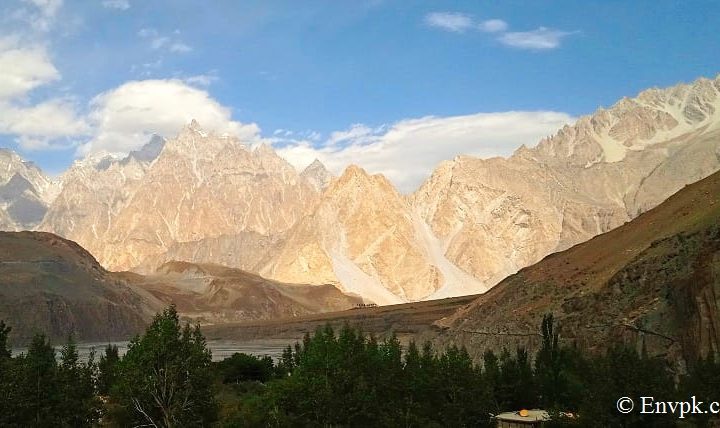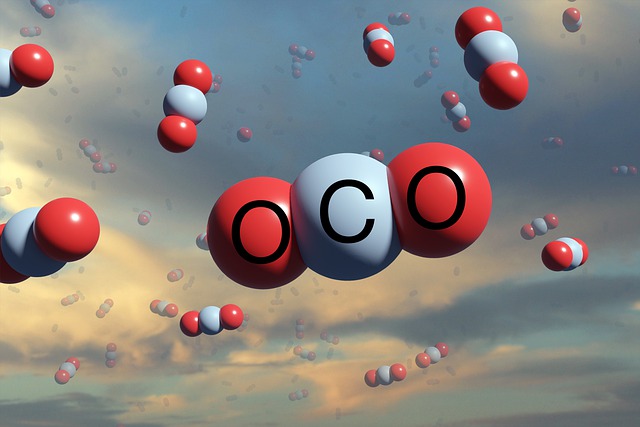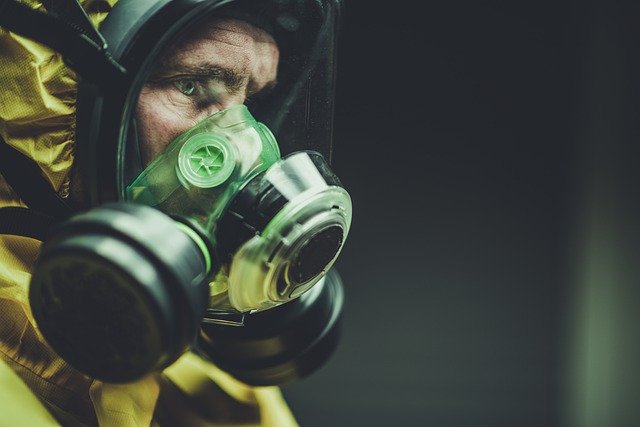Introduction:
The poor and vulnerable mountain communities of Gilgit Baltistan emitting lowest carbon are suffering the most from climate change. For just and sustainable climate and environment, we need to look at the climate crises through a human right lens and belief in working together to create a better future for present and future generations. Because different communities feel the effects of the climate crises differently. This crisis is disproportionately impacting the people of different class, color, race, gender, geography and generation unequally such as women, disabled people, working class, poor people and people dependent on natural resources for their livelihoods who are largely effected are not those most responsible for causing it.
You might also like: Effect of Climate Change On Gilgit Baltistan of Pakistan
Climate Change Impact on Mountain Communities:
The climate change is hitting the mountain communities of Gilgit Baltistan who already suffer from poverty, discrimination, and structural disadvantage and gender inequalities. This vulnerable mountain region is home to the highest mountains, many iconic species as well as millions of people. These people depend on natural resources for their livelihoods and value ecosystem services by ensuring their sustainable traditional activities and practicing small scale agricultural and effective community management. This region also provides essential ecosystem for livelihood as well as opportunities for recreation and sustainable tourism. But the mountain ecosystem is more sensitive to climate change as compared to the other terrestrial ecosystem. The rise of temperature causing Glacier melting, extensive snowfall and floods in mountain region is the symbol of climate change that possess a fundamental threat and dangers to the survival of people. The impact of global climate change is melting the glaciers of this region at a faster rate than ever recorded in human history (for more info: Climate Change and Himalayan Glacier Hazard). Rising temperature and changing precipitation patterns are disrupted water flow that disrupts plants, wildlife and millions of people. The natural incidents continuously threatening their mental and physical health, quality of life and wellbeing, but also violates their constitutional inalienable fundamental rights as well.
The 7 May 2022 glacial lake flooding destroyed Hassanabad Bridge in district Hunza, swept away house and roads. The flood also partially damaged a jammat khaana and caused a shortage of drinking and agricultural water, affecting their life and religious practices.
Due to higher temperatures, there will be more rain rather than snow which makes the problem worse. Rainfall on settled snow leads to flash flooding. In August 2019 a heavy rain in Skardu caused floods in Shigari kalan, Rigayool, Tinjos, and Shigari bala villages and demolished houses, swept away standing crops and trees and caused drinking water shortage. In July 2021 Diamer flash floods damaged many houses and 3 persons were died including a girl. Also, the annual Indus River flooding and its changing directions in Skardu taking down houses, Fields, Trees and wrecking lives every year. These river bank villages include, Hotto, Sundus, Ranga and Zrasna lost acres of their agricultural land, on which their families depend for their wellbeing and survival. These poor people are unable to response such a massive destruction caused by climate change. Many more households becoming landless. All these things negatively impact their enjoyment of fundamental human rights.
Also read: What is Climate Justice and Why Is It Important?
Human Rights Dimensions of Climate Change and State Obligations:
1. Domestic Obligations
Due to the constant effect of climate change, the enjoyment of the fundamental rights across the region is under serious threat includes their “Right to Life” and “Right to Dignity” Under Articles 9 and 14 of the 1973 constitution of Pakistan. The local residents’ losses acres of their agricultural land and livestock’s and are experiencing human rights crises on daily bases. Destruction of crops, agricultural lands and infrastructure due to unusual weather and floods causing food insecurity and water insecurity which is the violation of 1973 Constitution, Article 9 “Right to life”( includes clean and healthy environment, unpolluted atmosphere food, water and shelter), Article 14 Dignity of man, Article 27 safeguard against discrimination, Article 25 equality protection of law, Article 24 protection of property, Article 28 preservation of cultural ( includes their sustainable cultural activities/ indigenous people) and Article 38 promotion of standard of living or basic necessities of life(such as food, clothing, housing, education and medical relief) for all citizens, irrespective of sex, caste, color, creed or race.
You may also like to read: Climate Change Is Increasing Water Scarcity Around The World and Food Security and Climate Change in Pakistan.
2. Obligations under International Human Rights Instruments
Many international instruments on human rights also contain the Right to life in one way or another which are ratified by Pakistan. Article 3 of the Universal Declaration of Human Rights states the following: “No one should be arbitrarily deprived of life”. The International Covenant on Economic, Social and Cultural Rights (ICESCR) incorporates the definition of Right to life in its Article 11 as an adequate standard of living which includes: adequate food, shelter, housing, clothing and freedom from hunger and malnutrition and the International Covenant on Civil and Political Rights recognizes the inherent right of every person to life in its Article 6. This right shall be protected by law.
You might also be interested in: Climate Change Threatens Health and Livelihoods of Pakistanis
3. Obligation under International Instruments on Climate Change
Pakistan also ratified many international instruments related to climate change including the Paris Agreement, on cutting the greenhouse gases, The Kyoto Protocol that also restrict industrialized countries to limit or reduce their emissions, Vienna Convention for the Protection of Ozone Layer, Montreal Protocol and The United Nations Framework Convention on Climate Change. Also, the landmark resolution adopted by UN Human Right Council in October 2021 recognizes the fundamental right to clean and sustainable environment and called all member states to implement this right. They are entitled to a healthy and productive life in harmony with nature. For more information on international instruments ratified by Pakistan, check out International Environmental Agreements Signed by Pakistan
Therefore, in the context of climate change the government of Pakistan has legal obligations to put in place adaptation and mitigation measures to ease the adverse effect of climate change on the enjoyment of the right to life, liberty, dignity, property, information, and equal protection of law guaranteed by the constitution of Pakistan, millions of Pakistanis who have and will be adversely impacted by climate change. The constitutional provision on human rights effectively contribute to tackling the negative effects of climate change on the environment and human beings. These constitutional provisions are also related to the strengthening of environmental legislation, democratic institution, and creation of accountability mechanisms, greater citizen participation in decision making and environmental sustainability as well as promotion of living rights.
Also check out: Environment Discrimination and the Importance of Environmental Justice
Conclusion:
For just and fairer Atmosphere the government of Pakistan includes, the provincial government, local government and other institution should take action to address climate change with respect, promote and consider its obligations on human rights, right to health, right to property, right to clean and sustainable environment, right to water, right to food, right to development, natural resources, rights of indigenous people, local communities, refugees, children, women, disable persons and gender equality and non-discrimination by strengthening national plans, by ensuring and respect human rights and ensuring participation of affected communities.
Also check out: Covid-19 and Climate Change – Exposing Environmental Injustice
References:
- New – Columbia Climate School
- Geo News
- Dawn News (1, 2)
- Commonwealth Legal Information Institute (1, 2)
- UN Human Rights Office of the High Commissioner (1, 2, 3)
- UN Universal Declaration of Human Rights
This article was contributed by Nosheen Jahan. Nosheen is an undergraduate law student at Kinnaird College for Woman University Lahore. She is a passionate campaigner and working for Animals rights protection and Environmental Rights Protection in Pakistan. Her mission is to build people’s power in vulnerable communities to achieve environmental health and justice by preventing and reducing pollution and building green, healthy, sustainable and peaceful communities and environments. She has been a former Legal Intern at Pakistan Center of Legal Research and Publication (PCLRP). Her work has been published by PCL Student Journal of Law. She has been also recognized as a UNLEASH Talent for her contributions to SDG 13, SDG 14 and SDG 15. Her area of interest includes: Environmental justice, Human Rights, Gender Issues in Law, Animal jurisprudence, Constitutional law, Climate Justice and International law.
We hope you liked this post! Please comment below if you have any suggestions, comments or feedbacks! We at #envpk love hearing from readers! Thanks!




